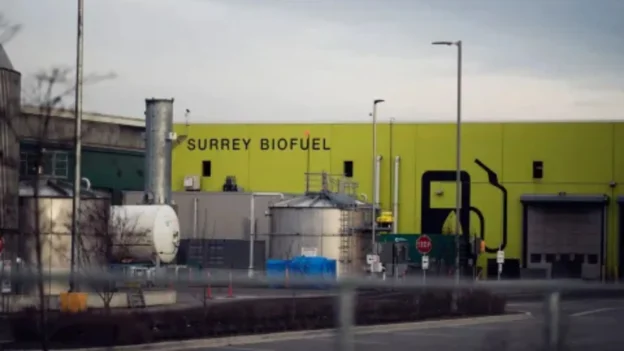Researchers at the University of British Columbia (UBC) have identified a game-changing microorganism in the production of renewable natural gas (RNG). It is a new bacterium belonging to the Natronincolaceae family that is capable of sustaining the production of methane. methane production even in the presence of high levels of ammoniaa condition that would normally stop the process in most digesters.
The renewable natural gas generation process
At biofuel plants such as the one in Surrey, British Columbia, billions of microbes break down more than 115,000 tons of organic waste annually, converting peelings, leftovers and food surpluses into usable gas.
This biogas is purified through a system of stages that eliminates contaminants such as CO₂, H₂S and water vapor, until it reaches 98% methane purity, ready to be used as fuel or injected into distribution networks.
Anaerobic digestion involves a chain of decomposition: from simple compounds to organic acids such as acetic acid. This is where the new microbe comes in, capable of metabolizing acetic acid in environments with high ammonia content, without compromising energy production.
The discovery was made possible by an isotopic labeling technique developed by Dr. Ryan Ziels’ team. This tool made it possible to track which microbes were active when the usual ones had disappeared.
The newly identified strain is ammonia tolerant and allows maintaining the operational stability of the biodigesters without the need for costly restarts.
This breakthrough can significantly reduce failures in municipal plants, which would otherwise see their production interrupted by acetic acid buildup. It also raises new opportunities for designing more robust systems capable of handling protein-rich waste, such as dairy and meat.
Various applications
The UBC team is also applying this microbial tracing technique in marine environments, with the goal of identifying organisms capable of degrading microplastics. This suggests that the benefits of this finding may go beyond terrestrial energy production, also contributing to the mitigation of marine pollution.
Thanks to its chemical resistance, this microorganism can be the basis for new standards in digester design for harsh environments. The collaborations between UBC, FortisBC and Convertus at the Surrey plant show that integrating microbiological science with applied engineering allows environmental challenges to be addressed more effectively.
The findings were published in the scientific journal Nature Microbiology.
Source and photo: University of British Columbia


